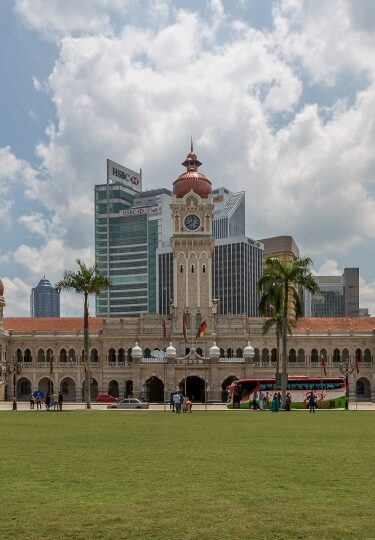From superb street food to fine dining restaurants, gleaming Buddhist altars to domed mosques, there are so many things to do in Kuala Lumpur. Above all, the city showcases the diversity of Malaysia, with Malay, Indian, and Chinese cultures all proudly represented.
It’s also possible to see some of the spectacular tropical greenery in the city. From the Botanical Garden, which is among the finest in the world, to the Butterfly Park, which truly evokes a sense of wonder, there’s a surprising abundance of flora and fauna even in the midst of the glass-and-steel skyscrapers.
Here are a few of the best things to do in Kuala Lumpur.
Admire the View from the Petronas Towers
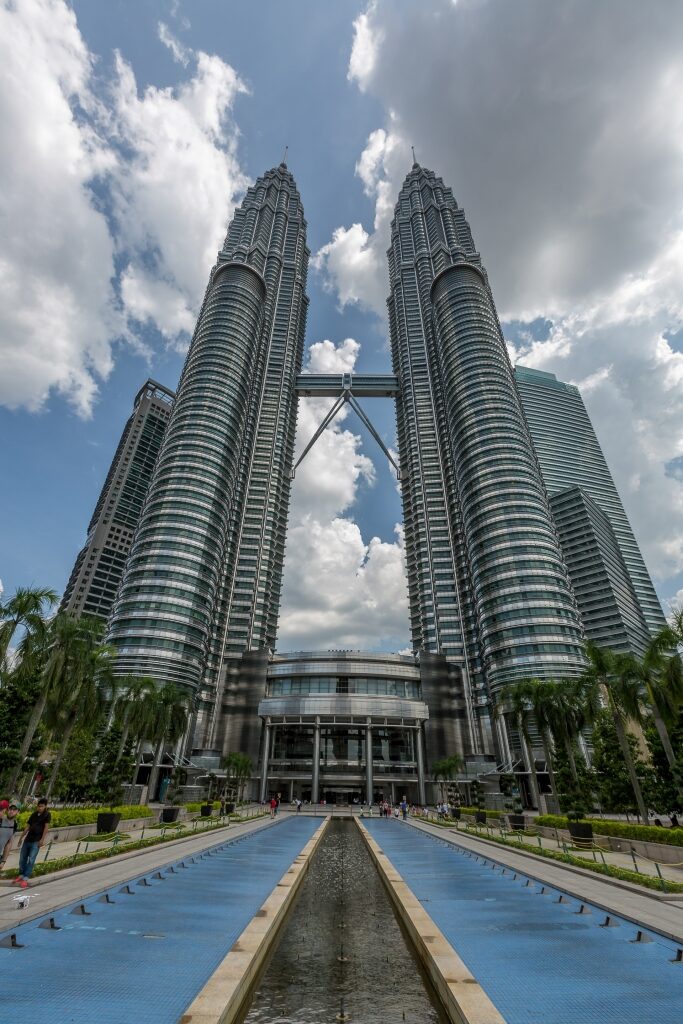
Petronas Towers
The Petronas Twin Towers should be at the very top of any traveler’s list in Kuala Lumpur. Certainly, at 1,483 feet and 88 stories above the ground, they make for an awe-inspiring sight.
Until 2004, they held the distinction of being the highest man-made structures in the world. While these vertiginous skyscrapers can’t claim to be the tallest anymore—that honor belongs to the Burj Khalifa in Dubai—they remain the tallest twin towers.
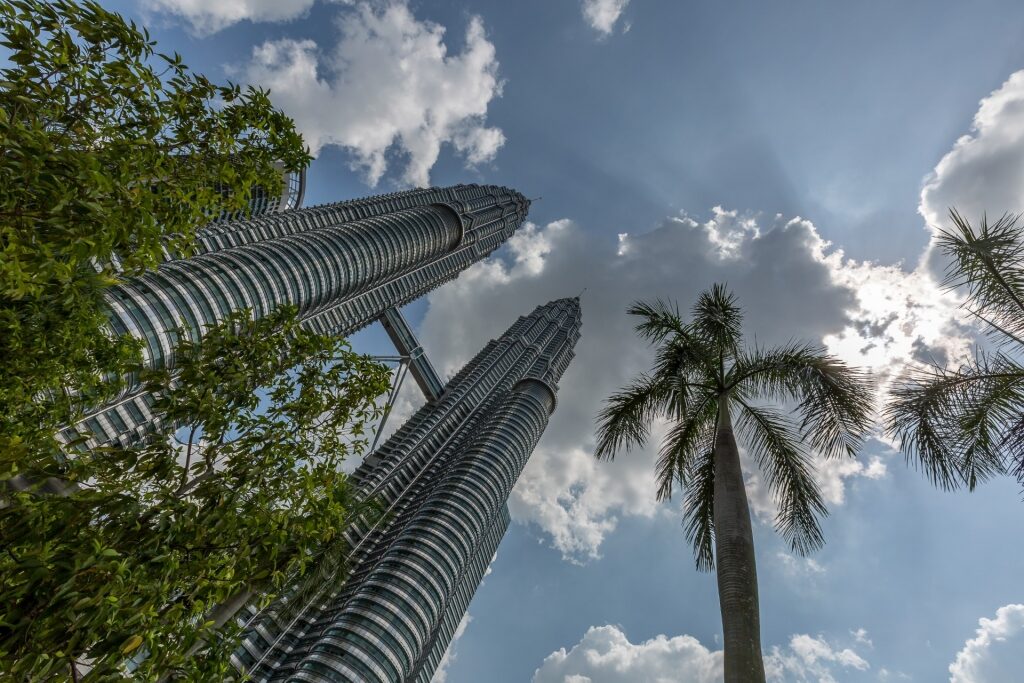
Petronas Towers
In addition to their formidable height, the towers boast all sorts of distinctive architectural details. Cesar Pelli, the Argentine architect who designed them, envisioned that the Petronas Twin Towers would be a harmonious integration of traditional Malaysian and Islamic architectural styles, in a nod to Kuala Lumpur’s diverse population.
Needless to say, the towers provide spectacular views. First and foremost, of course, is the dizzying view from the Petronas Twin Towers Observation Deck on the 86th floor. Lower down but equally striking is the Skybridge on the 41st floor, which lets you walk between the two towers.
Sample Street Food
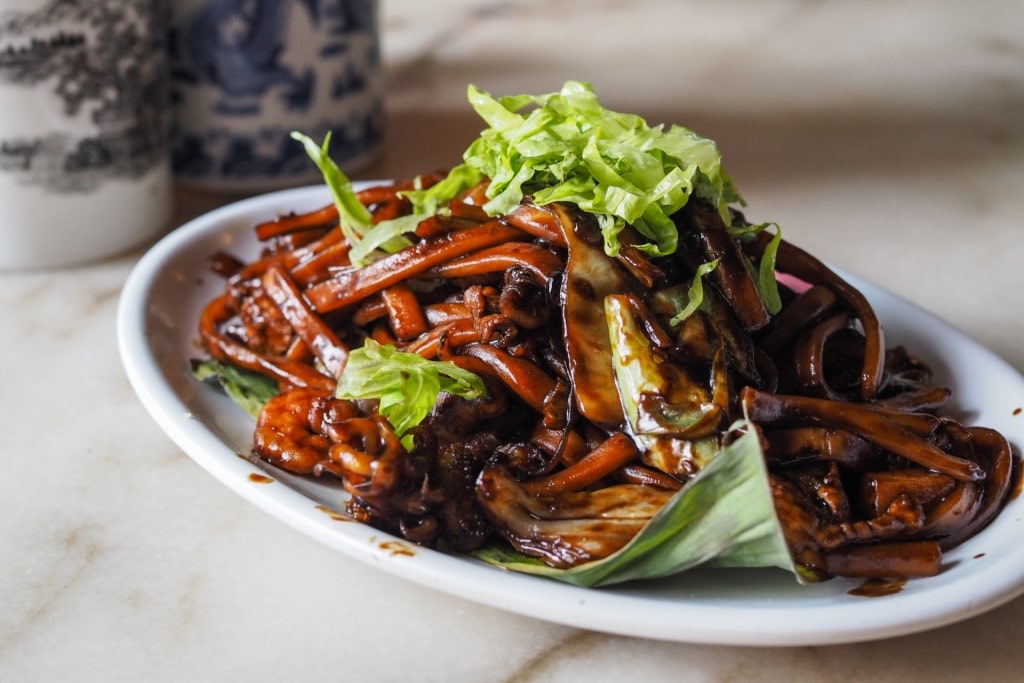
Hokkien mee
Malaysians live to eat—and no wonder, given the sheer abundance of delicious foods in the national repertoire.
And while nowadays Kuala Lumpur has a high-profile fine dining scene with everything from upscale French bistros to Japanese omakase, locals will still say that some of the best dishes are found in the street.
Keep an eye out for the ubiquitous Hokkien mee, a tangle of taxi-yellow noodles served either stir-fried or with soup.
While the Penang regional variation, which comes topped with jumbo head-on prawns, may be more famous, the Kuala Lumpur version, which comes slicked with dark soy sauce and topped with fish cakes and pork, is sublimely savory.
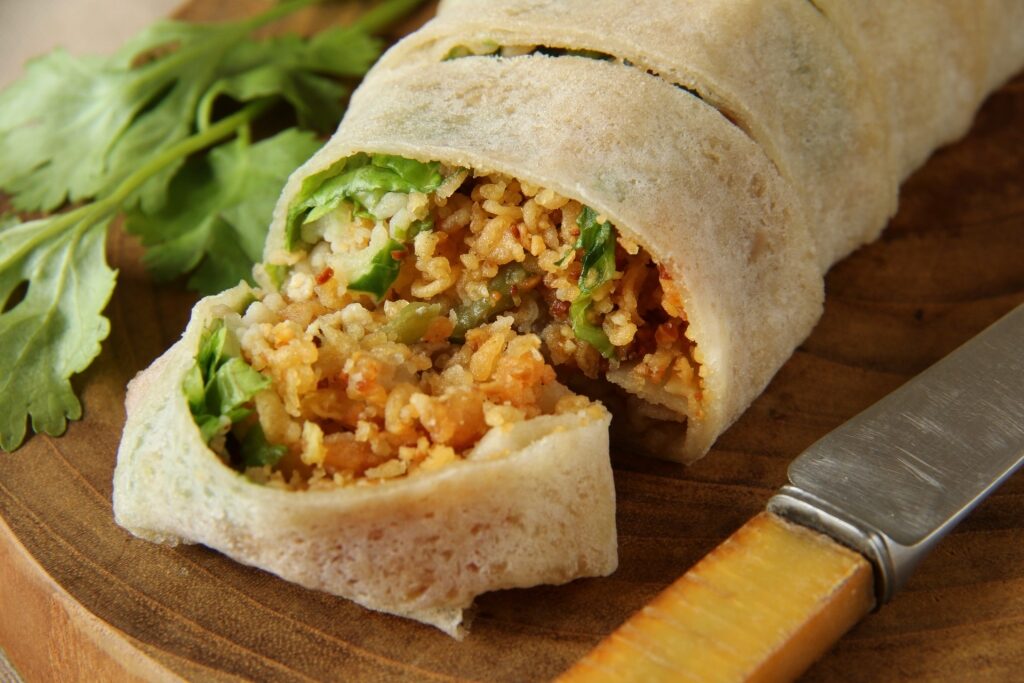
Popiah
Other favorites include popiah, a distant cousin to Vietnamese spring rolls stuffed with crunchy vegetables, and otak-otak, a sunset-hued fish cake seasoned with turmeric, chiles, and other spices before being seared on a grill.
Finally, don’t leave Kuala Lumpur without trying char kway teow, Malaysia’s beloved lard-fried noodles studded with sweet Chinese sausage, bean sprouts, chives, cockles, prawns, and other seafood.
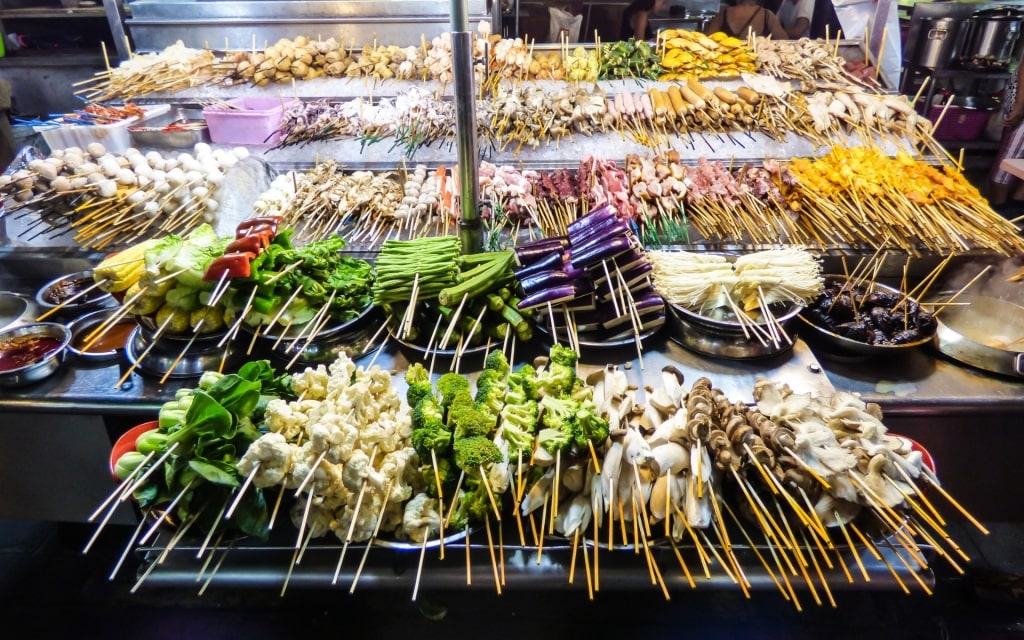
Jalan Alor
Among the street food hot spots, Jalan Alor in the Bukit Bintang neighborhood has one of the widest selections.
Hawker stalls, some of which have been run by the same families for generations, serve up a magnificent array of bites. Most stalls feature photos of the available options, making ordering easy even through the language barrier.
Read: The Ultimate Kuala Lumpur Food Guide
Visit the Thean Hou Temple
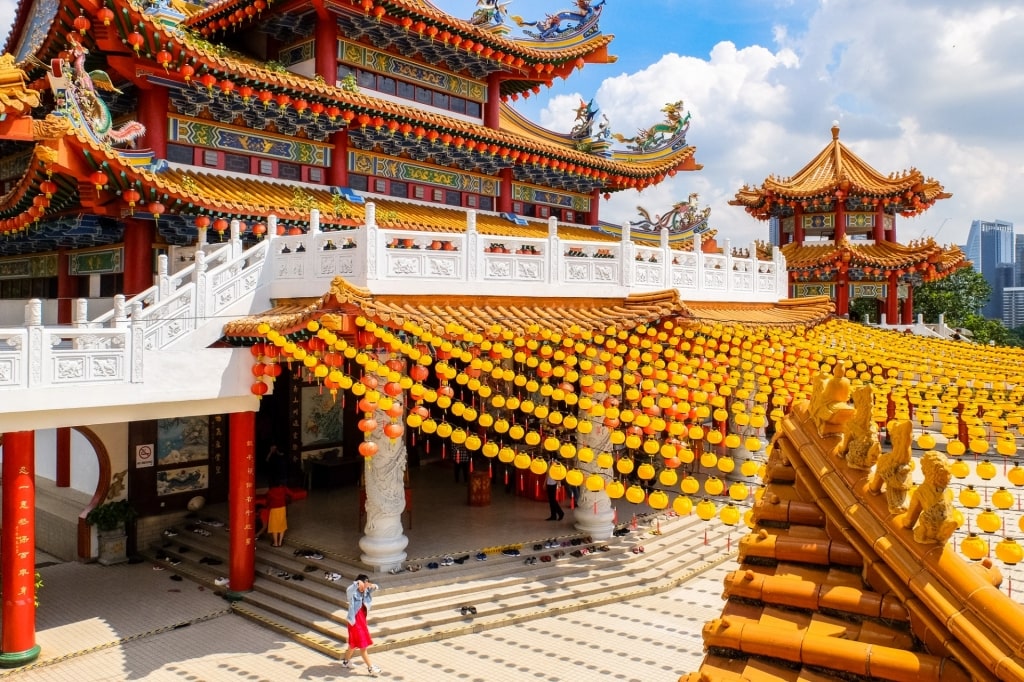
Thean Hou Temple
Situated on Lorong Bellamy, this Hainanese temple marries symbolic references to Confucianism, Buddhism, and Taoism, all into one sprawling complex.
As one of the largest temples in all of Southeast Asia, Thean Hou Temple merits leaving a few hours for proper exploration. As you wander among the swooping tiled rooftops, scarlet pagodas, and well-manicured gardens, it’s easy to imagine that you’re in another, far more serene world. The temple itself is a six-tiered marvel dedicated to Mazu, a sea goddess.
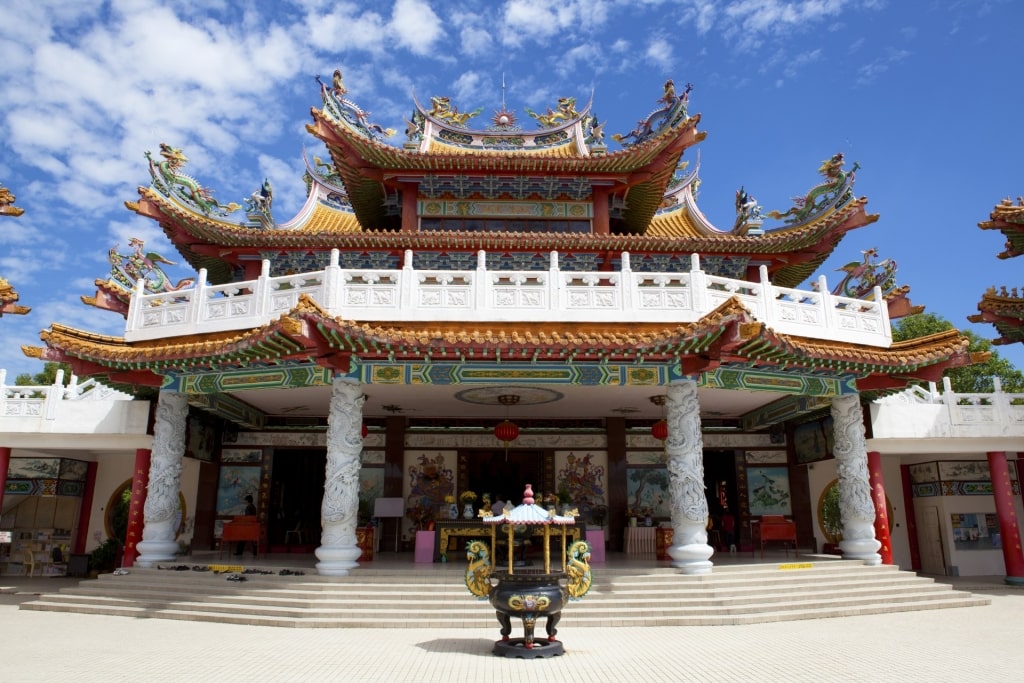
Thean Hou Temple
In the central prayer hall, you’ll find three altars, including a golden shrine dedicated to Guan Yin, the goddess of mercy.
Since this is an active place of worship for many, it’s important to remember to behave respectfully. Visitors are asked to speak softly, dress appropriately, and avoid excessive flash photography.
A number of activities, from tai chi and qigong classes popular with local senior citizens, to fortune-telling consultations, take place throughout the week.
Get a History Lesson in the National Museum of Malaysia
Constructed in the style of a grand Malay royal palace, Kuala Lumpur’s National Museum is worth a visit for the architecture alone.
Lapis-lazuli-hued tiles imported from Pakistan form intricate patterns on the high ceilings of the Central Hall, while other mosaics depict scenes representing Malaysian mythology and history.
The Malaysian government intentionally built the museum on the site of the former Selangor Museum, which was destroyed by bombings in the Second World War.
Galleries in the expansive wings run through the history of Malaysia from the Bronze Age through colonialism and independence.
Stop to Smell the Flowers in the Perdana Botanical Garden
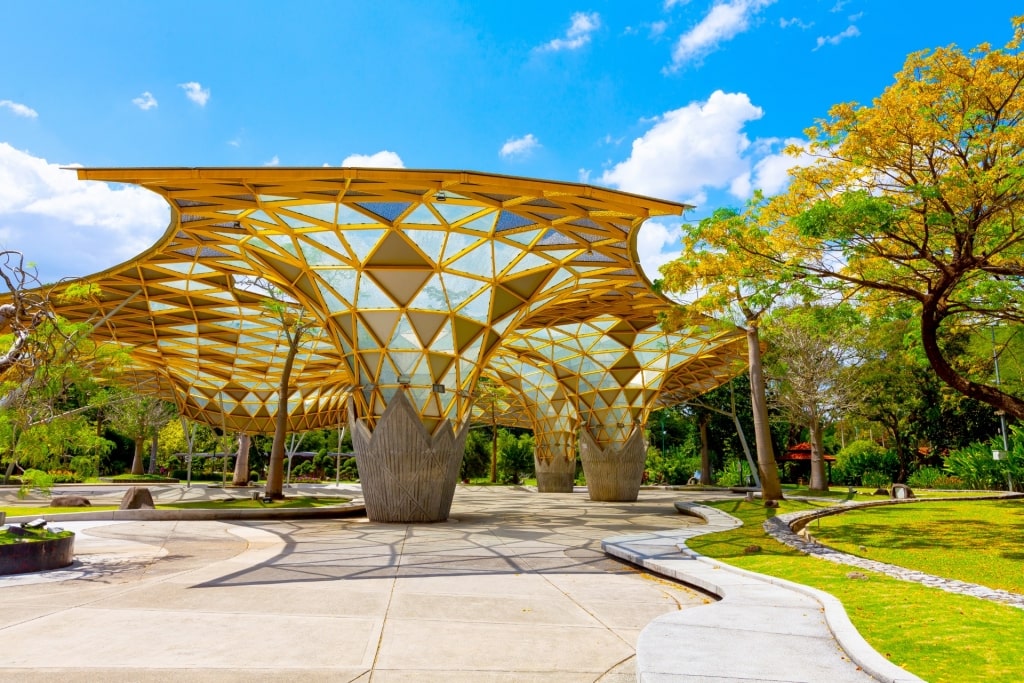
Perdana Botanical Garden
Previously called the Taman Tasik Perdana, Kuala Lumpur’s botanical gardens are a sight to behold and a welcome reprieve from the bustle of the city.
Start your visit at the Laman Perdana, a glass-roofed sculptural pavilion surrounded by Moringa trees in the center of the main garden.
Make your way through the Sunken Garden, a series of shrubs meticulously pruned into undulating patterns, then to the Hibiscus Garden, which features a profusion of Malaysia’s national flower, as well as a man-made waterfall and tearoom.
Spend an Afternoon at the Kuala Lumpur Butterfly Park
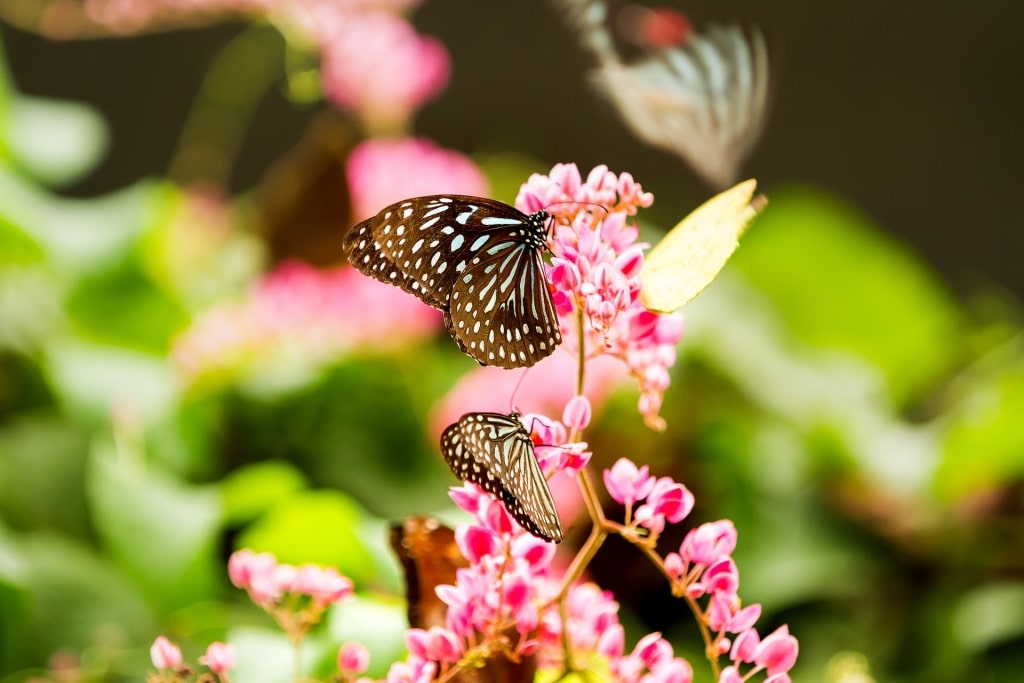
Kuala Lumpur Butterfly Park
The KL Butterfly Park, as it’s usually referred to for short, is one of the best things to do in Kuala Lumpur if you’ve got kids in tow.
Encompassing more than 80,000 square feet of artfully tended gardens, it claims to be the largest butterfly park in the world. More than 5,000 butterflies are kept in this verdant tropical wonderland.
Keep an eye out for a few other species, including koi fish swimming lazily in a large pond and turtles sunning themselves on the rocks.
Pay Your Respects at the National Mosque of Malaysia
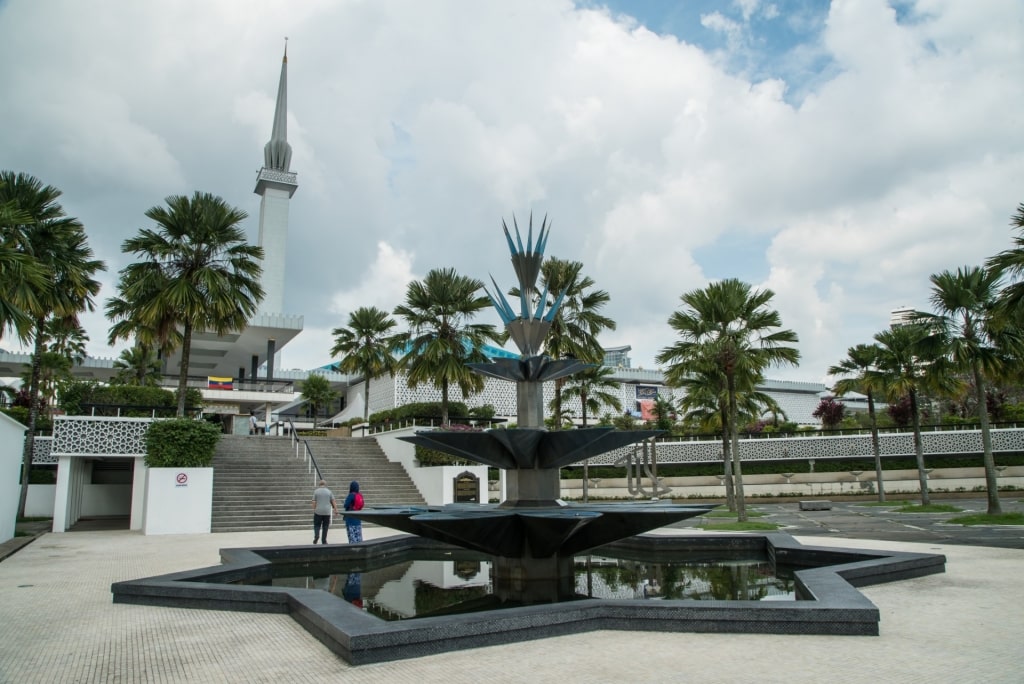
National Mosque of Malaysia
More than 15,000 visitors can crowd into the official headquarters for Islam in Malaysia. Not only is the Masjid Negara Malaysia, or the National Mosque, the largest mosque in Malaysia, but it’s also one of the largest in the world.
At the core of 13 acres of lush gardens lies a towering minaret flanked by an 18-pointed dome. While this is one of the most significant mosques in the country, it’s actually one of the more modern additions.
Architects in the 1960s intentionally eschewed colonial architecture tropes, looking instead to Mughal buildings for inspiration.
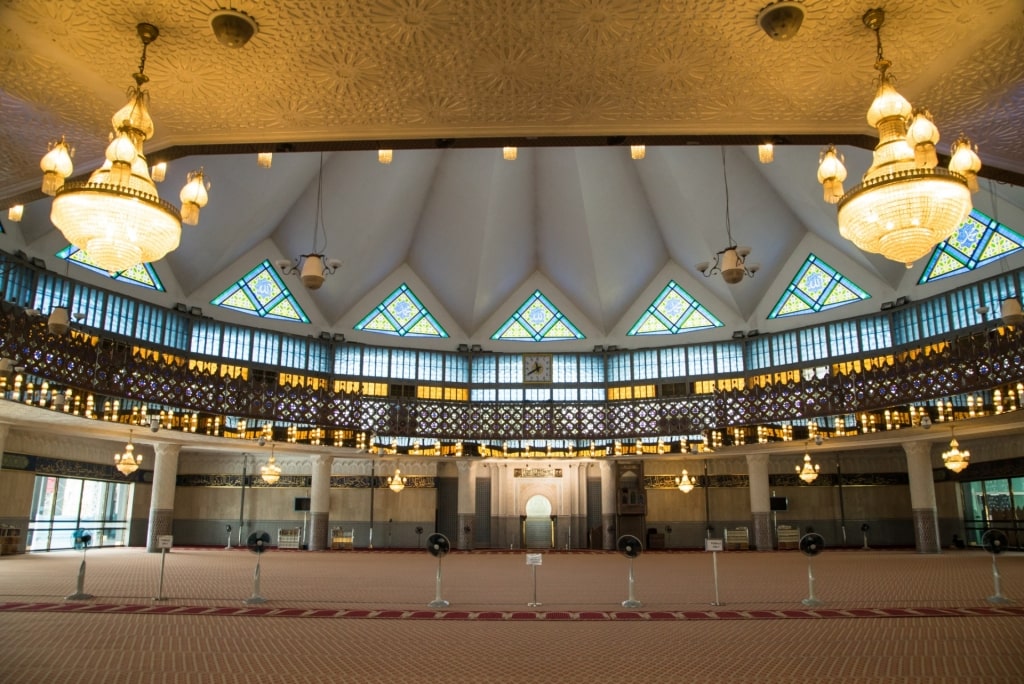
National Mosque of Malaysia
Visitors are very much welcome, but as with any active place of worship, encouraged to be respectful of those who have come here to pray.
Stroll Along Jalan Petaling
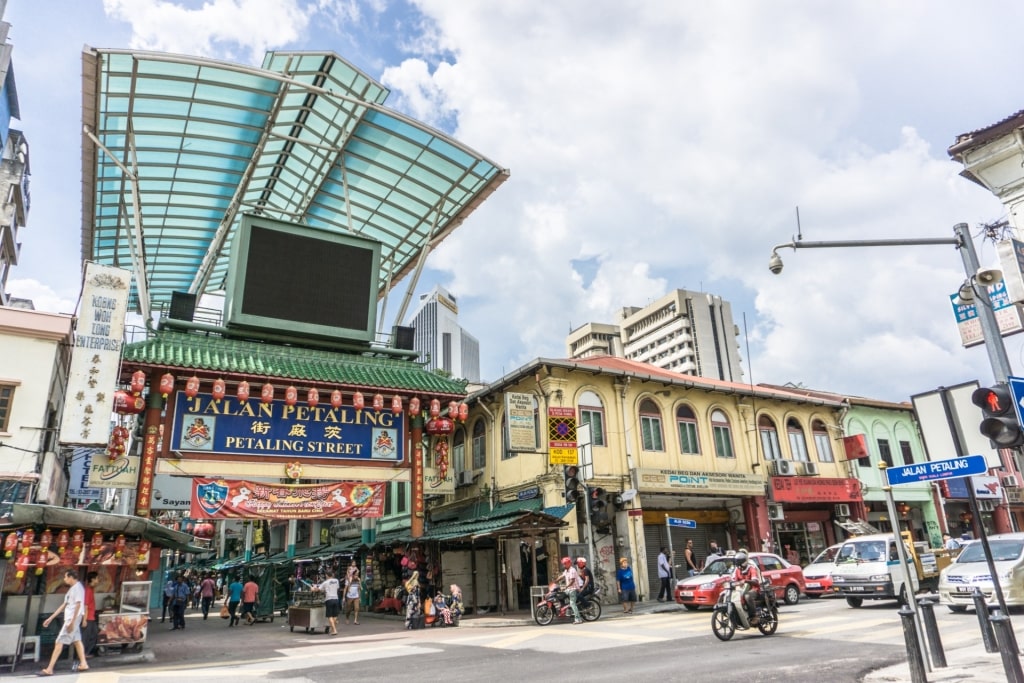
Jalan Petaling Photo by IQRemix on Flickr, licensed under CC BY-SA 2.0
Jalan Petaling, or Petaling Street, which runs through the center of Kuala Lumpur’s Chinatown, is a treasure trove for bargain-hunters and food-lovers.
Originally home to Hakka, Cantonese, and Hokkien workers who immigrated from China, the whole area is now one of the liveliest spots in the city.
Come prepared to haggle—it’s expected here and part of the fun, provided everyone remains respectful—and ready to eat.
Among the many standout food stalls here, Sze Ngan Chye Roast Duck has been a local icon for decades. Brittle-skinned, with a gorgeously lacquered sheen and impossibly moist, flavorful meat, these birds are worth waiting in the inevitable line.
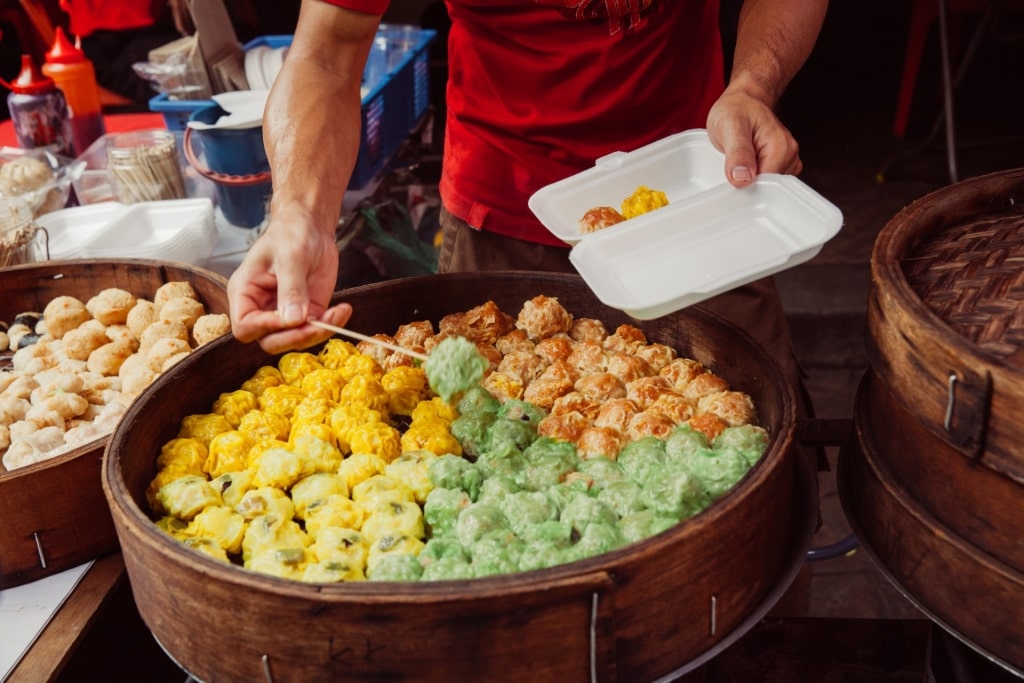
Kuih angku
Anyone with a sweet tooth is in luck here, since Malaysians excel at desserts that are as eye-catching as they are tasty. Look for kuih angku, jewel-like morsels made with glutinous rice flour and sweet potato, and ais kacang, a mountain of syrup-soaked shaved ice served with all sorts of toppings.
Kuih lapis, or “layer cake,” consists of delicate layers of brightly colored coconut-rice flour confection.
Its cousin kek lapis Sarawak, a celebrated regional specialty of Sarawak, also involves a series of thin, colorful layers, each of which must be individually baked. Both of the latter sweets travel well, making well-worth picking up an extra one for the road.
Check Out Merdeka Square
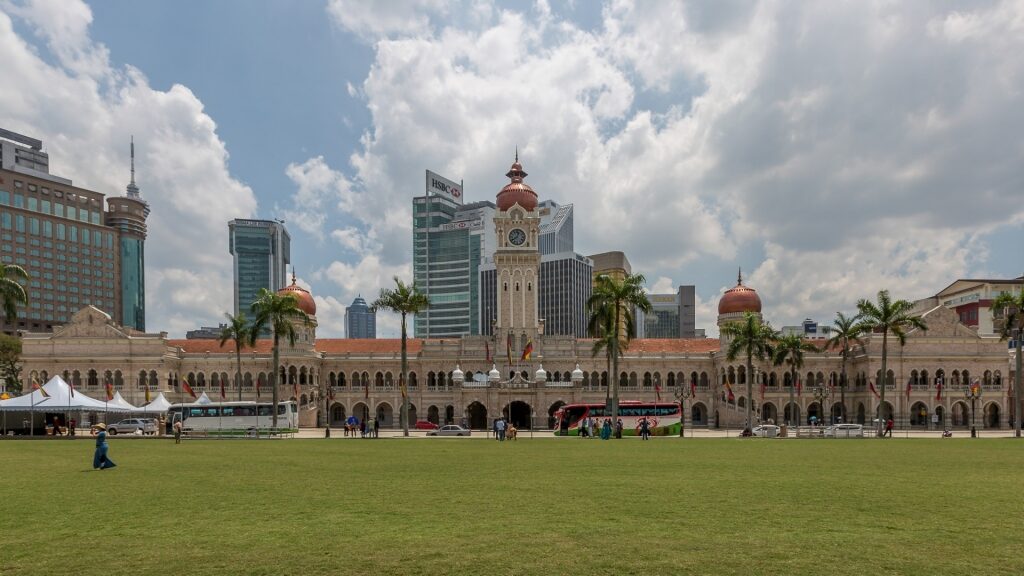
Merdeka Square
Arguably one of the most recognizable public spaces in Kuala Lumpur, Merdeka Square, or “Independence Square”, is at the cultural and political center of the city. This is where Malaysian independence was declared in 1957.
Previously a cricket green, the large expanse of grass is surrounded by the government’s primary offices, the Sultan Abdul Samad Building, and the Royal Selangor Club, a key meeting place during British colonial rule in the 1800s.
The whitewashed St. Mary’s Anglican Cathedral is also located here, a distinctive gothic structure with a red roof, and the oldest brick church in Malaysia.
Tour the Sultan Abdul Samad Building
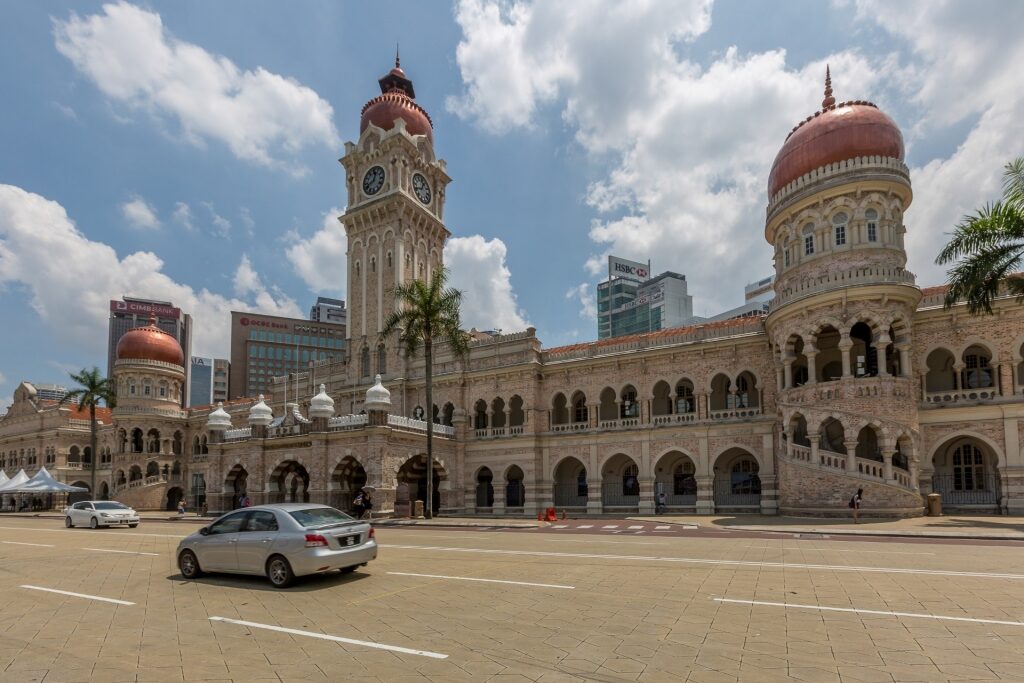
Sultan Abdul Samad Building
After pausing to take in the sights and sounds of Merdeka Square, head over to the former offices of the colonial British government for a closer look.
First opened in 1897, the red-brick facade is a masterpiece designed by Alfred Charles, or “A.C.” Norman. Its graceful colonnades, domed towers, and clock tower—an homage to the Elizabeth Tower that houses London’s Big Ben—represent an amalgamation of traditional Malay, Islamic, and British architectural styles.
The building forms the backdrop to many important events in the city, including the National Day Parade, which takes place on August 31.
Visit the Former National Palace
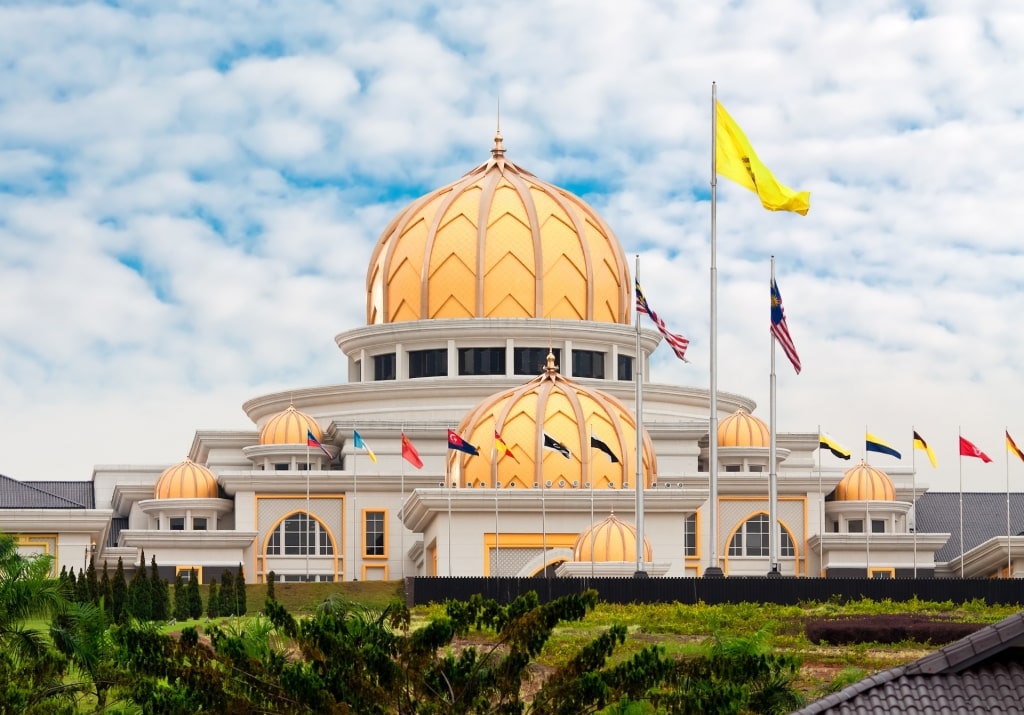
National Palace
When the Malaysian royal family decided to move residences in 2011, their former abode opened its doors to the public.
The National Palace, better known as the Old Istana Negara, offers a glimpse into the lives of the country’s monarchs. Twenty-two interior spaces, including the office, dining hall, throne room, and former bed chambers of the king and queen, are now open to tour groups.
Don’t confuse the museum with Istana Negara, the “new” national palace, which is the home of the head of state of Malaysia. You can peek through the gates of this impressive, yellow-domed structure, but you can’t go inside.
Shop for Crafts at The Pasar Seni Market
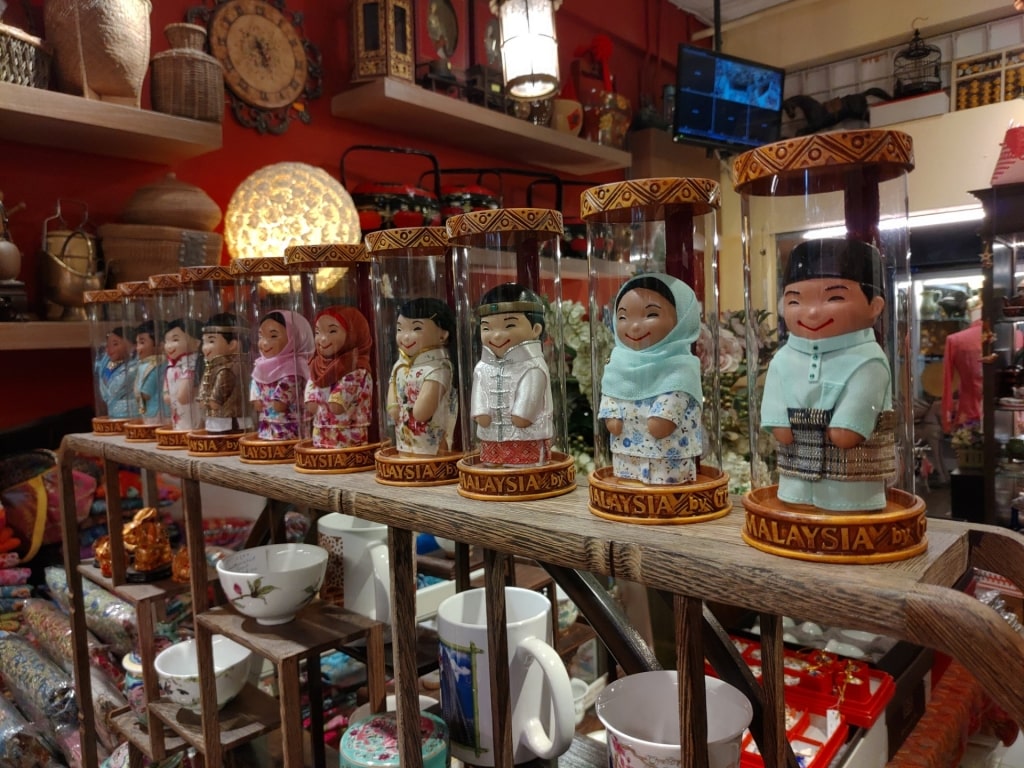
Pasar Seni Market
Since 1888, this central marketplace, a stone’s throw from Petaling Chinatown, features more than 300 shops spread over roughly 70,000 square feet, largely within a heritage art deco building.
For anyone on the prowl for distinctly Malaysian souvenirs or gifts, Pasar Seni Market is a real gem. Many of the vendors here specialize in fine textiles, handicrafts, and jewelry rooted in local traditions.
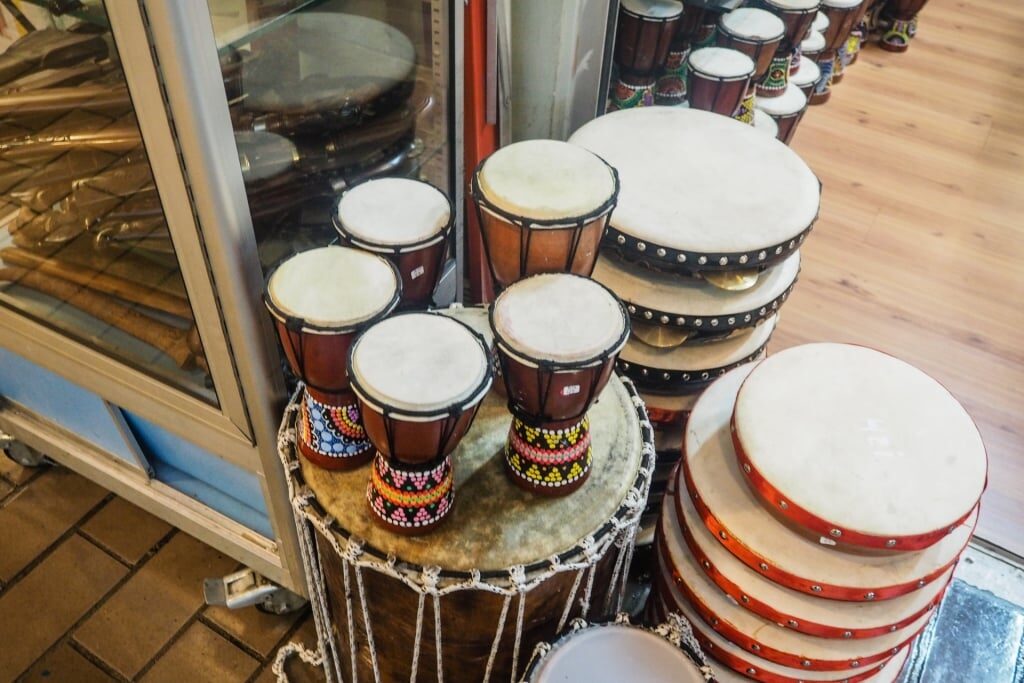
Pasar Seni Market
Given the sheer size of the market, navigating the space can feel a bit daunting at first. Note that the layout of the market itself is divided into three areas celebrating Malaysia’s three largest ethnic and cultural groups.
The Lorong Melayu features goods from the Malay community, while the Lorong India and the Lorong Cina correspond to the local Indian and Chinese communities respectively. One area not to miss is the Kasturi Walk, located along the robin’s egg blue exterior of the historic building.
Should you find your blood sugar levels flagging after all that shopping, make a beeline for Lorong Kelapa, a narrow lane within the marketplace dedicated to serving traditional Malaysian snacks and sweets. Pick up a few flaky-crusted curry puffs for the road.
See the National Monument
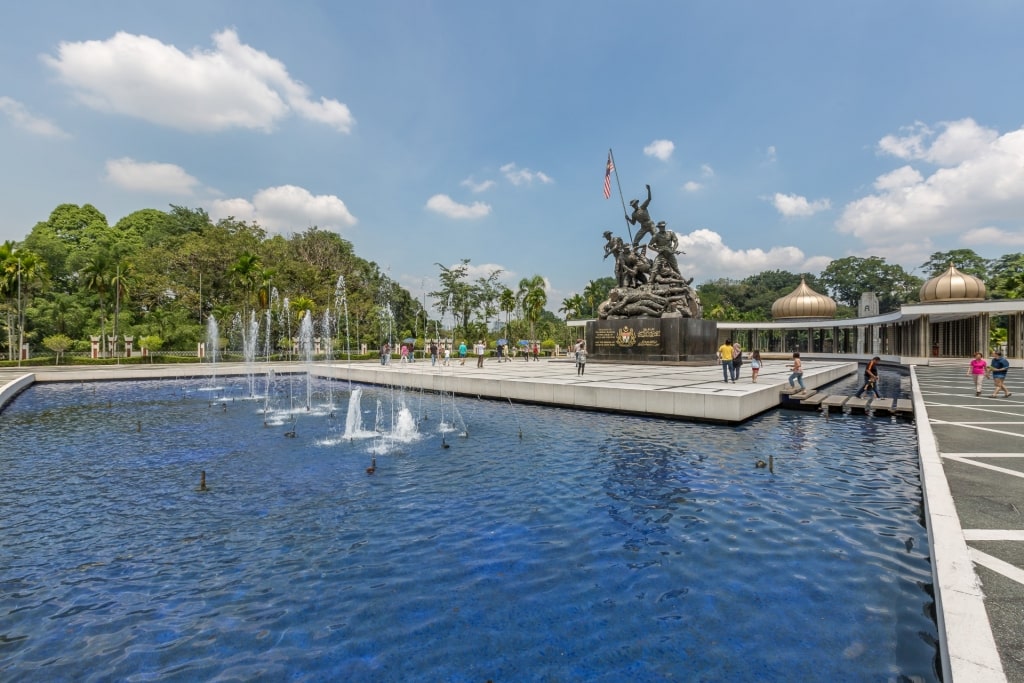
National Monument
Known as Tugu Negara in Malay, this monument designed by architect Felix de Weldon commemorates the soldiers who lost their lives during the Japanese occupation in the Second World War.
The monument depicts seven soldiers triumphantly carrying the Malaysian flag, representing the nation’s struggle for independence. At just over 50 feet tall, the bronze statue cuts an imposing figure over the surrounding public square.
Spend a Day in the Park at Taman Tasik Titiwangsa
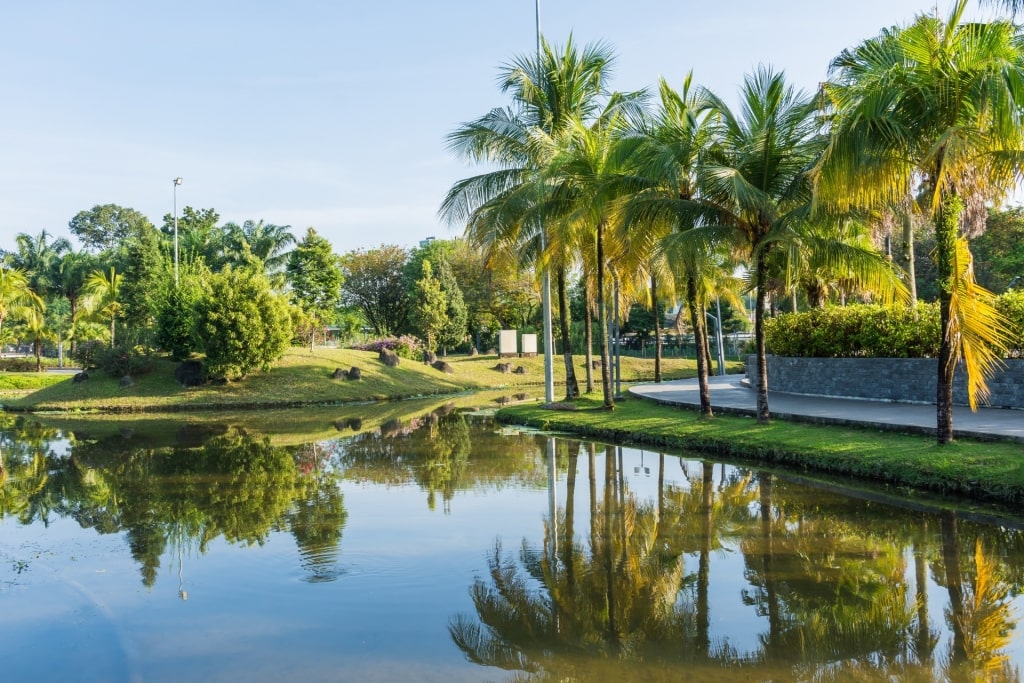
Taman Tasik Titiwangsa
When the high-octane pace of the city starts getting to you, retreat to this large, leafy park centered around a lake, stocked with fish and turtles, at the northeastern end of town.
Paved pathways for walkers and runners wind through much of the 234-acre green lung. Especially for children looking to stretch their legs and burn off steam, Taman Tasik Titiwangsa is ideal for a laid-back sort of afternoon. You’ll see plenty of locals enjoying picnics, jogging, cycling, and just taking in the greenery.
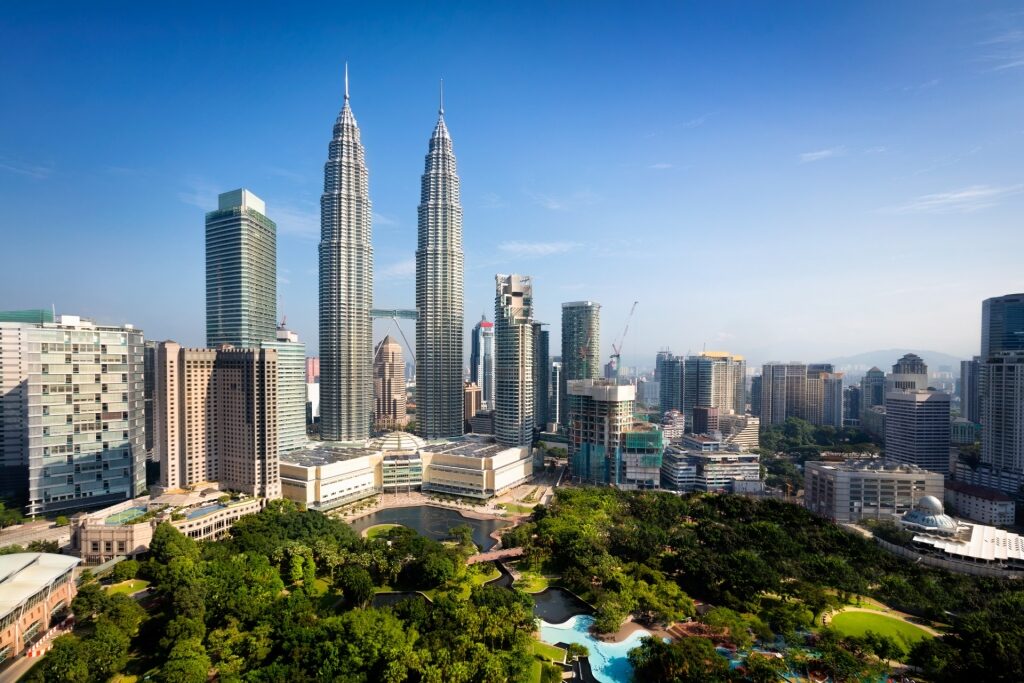
Kuala Lumpur
Explore all that Kuala Lumpur and the rest of Malaysia have to offer with a cruise to this culturally rich Southeast Asian nation. Take a look at Celebrity’s cruises to Kuala Lumpur and start planning your next voyage today.
